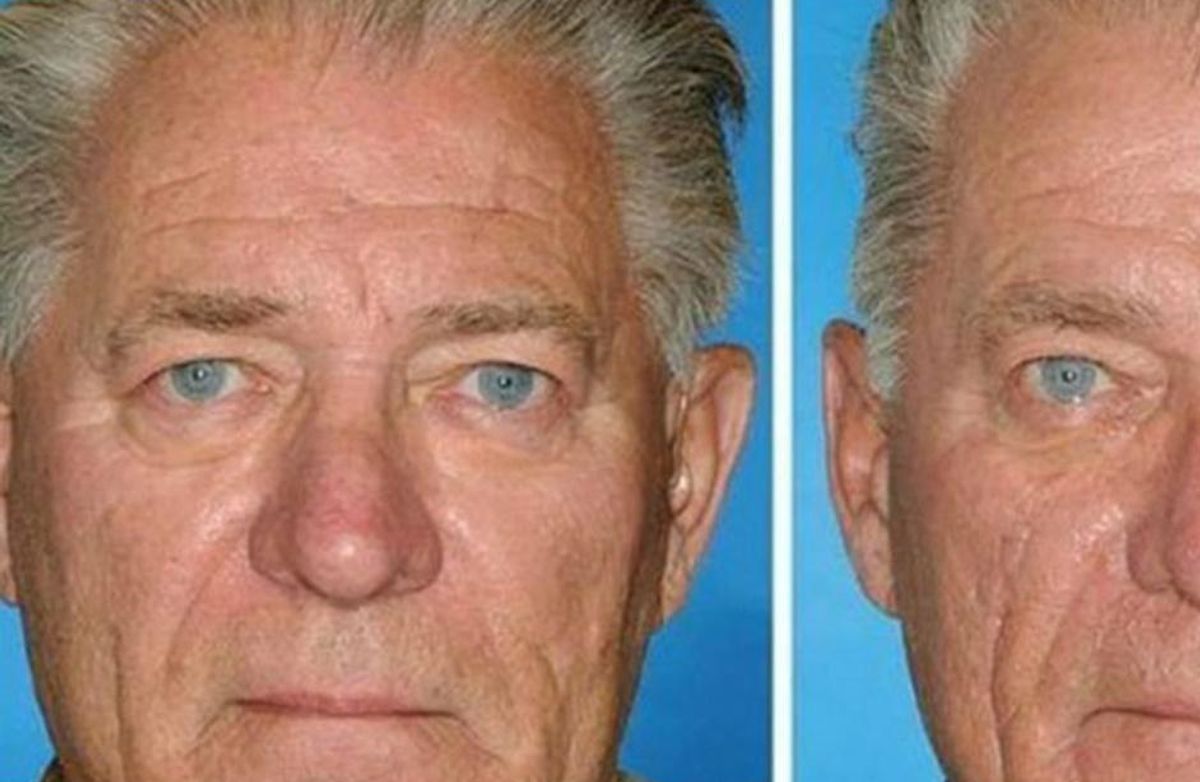Trying to guess which twin smokes is the perfect way to help you quit
Nobody would call smoking “glamorous” after seeing these comparisons.

Which twin smoked?
It's not revolutionary news that smoking wreaks havoc on your body in different ways. More often than not, however, the focus of anti-smoking campaigns is on your internal health, citing emphysema, heart disease, and lung cancer, to name just a few consequences.
While the superficial effects may not be as lethal, appealing to people's sense of vanity can have a powerful effect as this clever gallery below shows. Twins, only one of whom smokes, sit side by side, showing the profound damage smoking can cause to your face, hair, and teeth.
The twins' circumstances vary in each set of pictures, but the differences and effects are undeniable. In some instances, one of the twins never smoked. In others, the "smoking" twin had smoked for at least five years longer than the other "non-smoking" twin.
Though they're not common knowledge, the effects of smoking on your appearance are predictable and consistent. You can identify a smoker with ease if you know what you're looking for. Harmful smoke, dehydration, and even the heat from a burning cigarette can damage your complexion, hair, and eyes. The photos below helpfully point out the symptoms and effects on the smoking twin.
The photos here were taken from those of 79 pairs of identical twins at the Twins Days Festival in Twinsburg, Ohio. Though they weren't taken with this use in mind, that allows them to serve as an even more powerful testament to the effects as perceived by casual observers.
1. The eyes are a strong "tell" if someone's a smoker or not. In this photo, the smoker is the man on the right. He has smaller, more sunken eyes and carries more wrinkles throughout his face than his twin on the left. You'll also notice his hairline has receded further than his brother's. That's a little-known though hardly surprising effect of smoking habitually.

Can you tell the smoker?
Image via Wolters Kluwer Health.
2. Here, the difference is profound. Though they're the same age, they look almost like they represent different generations. The smoking twin on the right has done so for 16 years, and it's manifested in a number of ways. Most noticeable is the pervasive discoloration of her skin compared to her twin on the left. Less noticeable, but still apparent, is the damage done to her lips, eyes, and even her hair. It's difficult to believe they're even related, let alone twins.

Did I get this one wrong?
Image via Wolters Kluwer Health.
3. This comparison is less glaring but still apparent. The twin on the left is the smoker. You can see many more pronounced wrinkles on her forehead, under her eyes, and around her nose. There are also pronounced bags under her eyes.

Some differences are more subtle than others.
Image via Wolters Kluwer Health.
4. In this comparison, the smoking twin only smokes about two cigarettes per day, so the difference will be less profound. The twin on the right is the smoker. The differences are on the subtle side, mostly the more damaged hair and the squintier eyes.

Smoking can cause a receding hair line.
Image via Wolters Kluwer Health.
5. Based on what you've read in the earlier side by side pics, you might be able to ID the right twin as the smoker due to the discolored and receding hair as well as the aged skin.

Smoking appears to cause more gray.
Image via Wolters Kluwer Health.
6. These two twins are both elderly, so the differences are slightly less pronounced. Though the left twin has more graying hair, it's the right twin that's the smoker. She's got a droopier face, especially on the outside of the eyes. The wrinkles are also more pronounced in the brow and upper lip.

The hallmarks of smoking apparent on the skin.
Image via Wolters Kluwer Health.
7. Though the two sisters here are also older, it's easier to distinguish the smoker. The left sister bears the hallmarks all over her skin. Her cheek, outer eye, and neck all look weathered from her habit. Not only is she more wrinkled, but the skin has begun to discolor from the fair tone her sister has.

Wrinkles around the lips distinguish the smoker.
Image via Wolters Kluwer Health.
8. Here it's pretty difficult to tell. The woman on the left is the smoker. She sports slightly discolored lips that are upon inspection, more wrinkled than her sister's. Since the lips are the most proximate to the smoke, they are a pretty telling feature when it comes to identifying smokers.
The pics above show a lot of singular traits that can call out a smoker, but it can be a lot more simple than that. Speaking to the NY Daily News, dermatologist Elizabeth Tanzi from George Washington Medical Center dispenses with the jargon, stating, "Smoking makes you look old. That's all there is to it."
This article originally appeared on 11.01.16




 Beaver on riverbank.
Beaver on riverbank.  Pbs Nature Swimming GIF by Nature on PBS
Pbs Nature Swimming GIF by Nature on PBS  An actual beaver dam on the now-thriving Price River
An actual beaver dam on the now-thriving Price River 
 An old America Online disc. via\u00a0Karl Baron/Flickr
An old America Online disc. via\u00a0Karl Baron/Flickr  Brittany Murphy in the 90s.
Brittany Murphy in the 90s. 

 A table set up for wa wedding.via
A table set up for wa wedding.via  People lining up for a wedding buffet.via
People lining up for a wedding buffet.via 

 An old dog thrives on love.
An old dog thrives on love. TikTok · Millie_Archie
TikTok · Millie_Archie